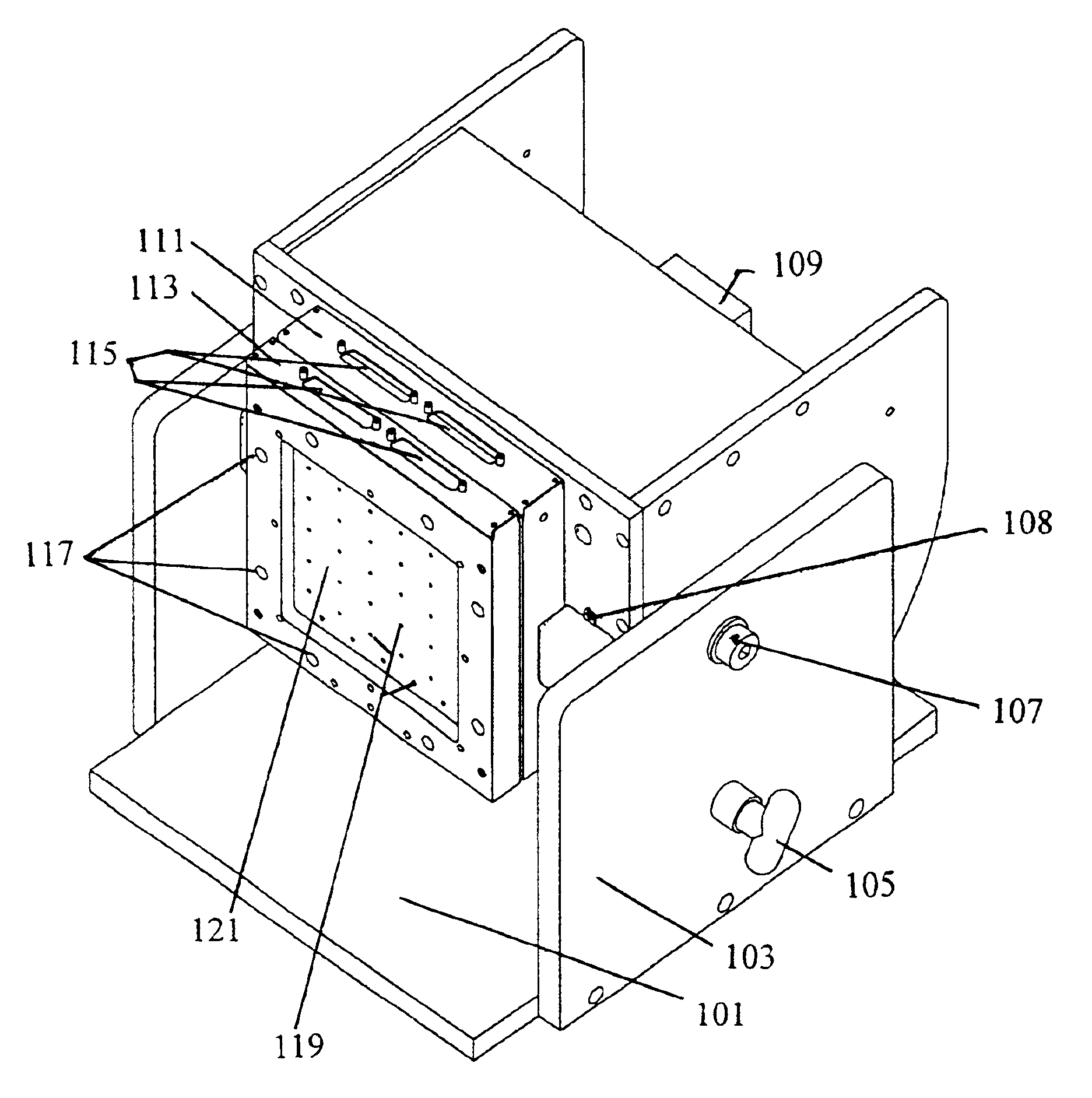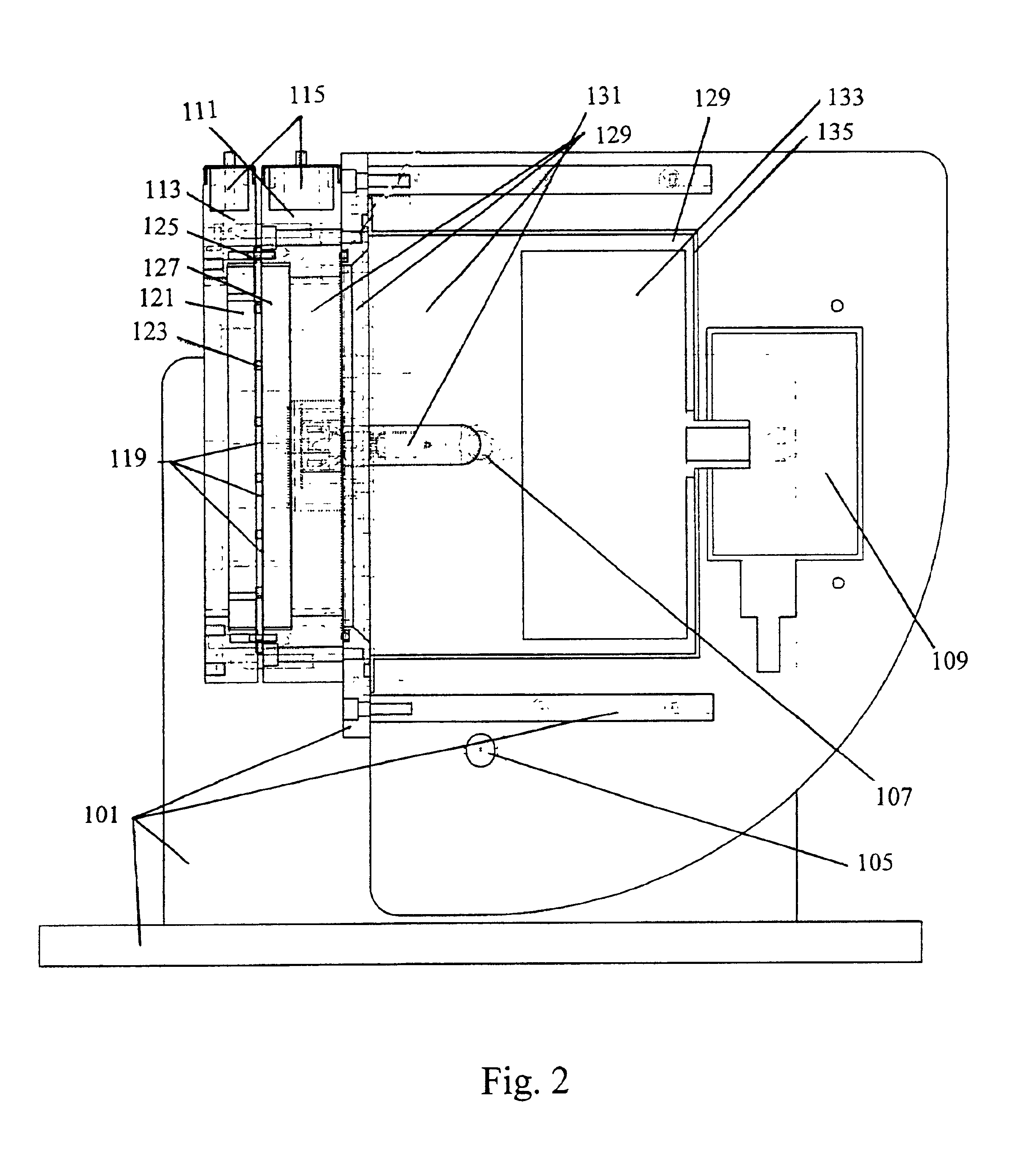Method of manufacture of colloidal rod particles as nanobarcodes
a colloidal rod and nanobarcode technology, applied in the field of nanoparticle manufacturing methods, can solve the problems of a large degree of non-specific binding, a decrease in the efficiency of hybridization (especially for cdna), and many of these seemingly revolutionary technologies are limited, and it is unclear whether these problems can be completely overcom
- Summary
- Abstract
- Description
- Claims
- Application Information
AI Technical Summary
Benefits of technology
Problems solved by technology
Method used
Image
Examples
example 1
[0106]One embodiment of the present invention is directed to the template-directed synthesis of multiple flavors of nanobar codes for the purpose of multiplexed assays. For this application it is desirable to construct a variety of different flavors which are easily distinguished by optical microscopy. For example, 10 different flavors of nanobar codes were individually synthesized according to the table below, using gold and silver segments. Note that the description field of the table indicates the composition of each nanobar code by segment material and length (in microns) in parentheses. For example, Flavor #1 is 4 microns long gold, and Flavor #2 is 2 microns gold followed by 1 micron silver, followed by 2 microns gold.
[0107]
Flavor #Description# SegmentsLength1Au (4)14 μm2Au (2), Ag (1), Au (2)35 μm3Au (1), Ag (1), Au (1), Ag (1),55 μmAu (1)4Au (2), Ag (2)24 μm5Ag (1), Au (1), Ag (1), Au (1),55 μmAg (1)6Ag (1), Au (4)25 μm7Ag (4)14 μm8Ag (1), Au (2), Ag (1)34 μm9Ag (1), Au (1),...
example 2
[0110]It is an important goal to demonstrate the ability to use a wide number of materials in the nanobar codes of the present invention. To date, rod structures formed by electrochemical deposition into a membrane template (alumina or track etch polycarbonate) include Ag, Au, Pt, Pd, Cu, Ni, CdSe, and Co. Primarily, the 200-nm pore diameter alumina membranes have been used for convenience. Many of the materials are now also being used in the smaller diameter polycarbonate membranes.
[0111]CdSe is currently plated via a potential sweep method from a solution of CdSO4 and SeO2. Mechanical stability problems have been encountered with the metal:CdSe interface; i.e. they break when sonicated during the process of removing them from the membrane. This has been remedied with the addition of a 1,6-hexanedithiol layer between each surface.
[0112]The Cu and Ni are plated using a commercially available plating solution. By running under similar conditions as the Ag and Au solutions, it was fou...
example 3
[0113]One embodiment of the present invention is directed to the template-directed synthesis of nanoscale electronic devices, in particular diodes. One approach, combines the membrane replication electrochemical plating of rod-shaped metal electrodes with the electroless layer-by-layer self-assembly of nanoparticle semiconductor / polymer films sandwiched between the electrodes. Described below, is the wet layer-by-layer self-assembly of multilayer TiO2 / polyaniline film on the top of a metal nanorod inside 200 nm pores of an alumina membrane.[0114]1. Materials
[0115]200 nm pore diameter Whatman Anoporedisks (Al2O3-membranes) were used for template directed diode synthesis. Electrochemical metal deposition was carried out using commercially available gold (Technic Orotemp 24), platinum (Technic TP), and silver plating solutions. Titanium tetraisopropoxide[Ti(ipro)4], mercaptoethylamine hydrochloride(MEA), ethyltriethoxy silane, chlorotrimethyl silane were purchased from Aldrich. All the...
PUM
| Property | Measurement | Unit |
|---|---|---|
| diameter | aaaaa | aaaaa |
| width | aaaaa | aaaaa |
| particle length | aaaaa | aaaaa |
Abstract
Description
Claims
Application Information
 Login to View More
Login to View More - R&D
- Intellectual Property
- Life Sciences
- Materials
- Tech Scout
- Unparalleled Data Quality
- Higher Quality Content
- 60% Fewer Hallucinations
Browse by: Latest US Patents, China's latest patents, Technical Efficacy Thesaurus, Application Domain, Technology Topic, Popular Technical Reports.
© 2025 PatSnap. All rights reserved.Legal|Privacy policy|Modern Slavery Act Transparency Statement|Sitemap|About US| Contact US: help@patsnap.com



